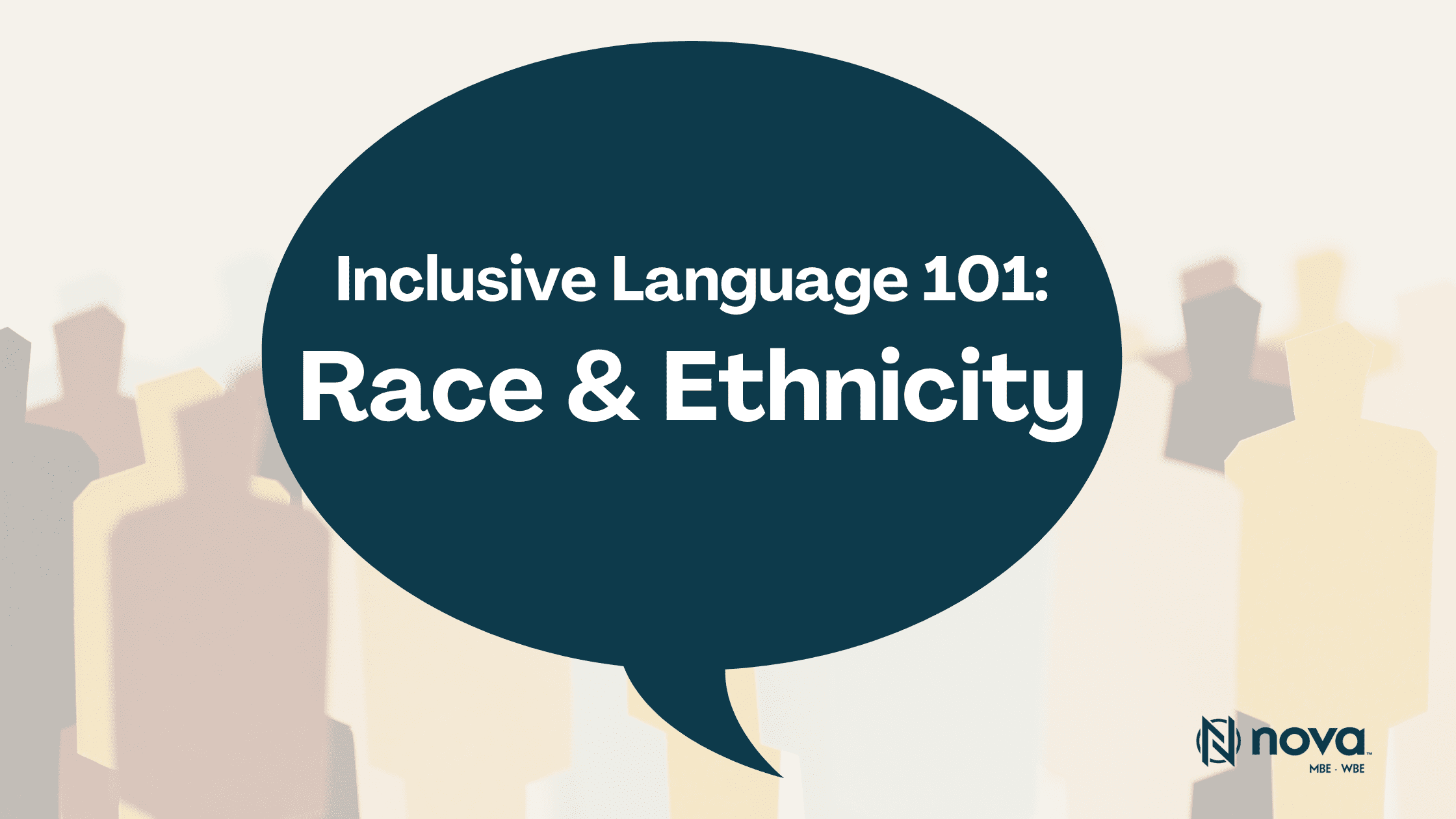Using inclusive language for race and ethnicity is one step towards promoting diversity, equity, and inclusion. Just as it’s important to use proper terminology to communicate clearly, it is equally important — if not more important — to use affirming and inclusive language when referring to all persons. People fall into different racial and ethnic groups – some people identify strongly with these groups, and others may not. Some folks might have characteristics that match their community or group, others may not. Seeing and acknowledging each person for who they are is a DEI imperative.
In using inclusive language for race and ethnicity, knowing the distinction between the two is essential. Some may use them interchangeably, but understanding one from the other can give us deeper insight into how we may apply inclusive language the right way.
Race vs Ethnicity
“Race” is generally categorized by things we can see. However, it is important to note that how you perceive someone’s race may not be how they identify, or you may not use the words that they prefer to be used (like Black vs African-American). Also, keep in mind that race is a non-universal social construct and cannot be solely attributed to physical characteristics.
“Ethnicity” refers to a broader term that is based on a person’s shared cultural expression and/or place of origin. Language, beliefs, practices, and ancestry are some key factors that may identify someone’s ethnic identity.
That said, people may identify as part of a certain race, and also have a distinct ethnicity. For instance, a person may identify as Black, with a French ethnicity.
Now that we know the difference between race and ethnicity, here are some principles to facilitate more inclusive language when referring to race and ethnicity.
Understand Current Terminology
Many terms that may have been acceptable several years ago are not best practice today. Thus, it’s important to avoid using outdated terminology when referring to someone’s racial and ethnic identity. Below are some examples of more appropriate terms and their meanings.
African American/Black:
African American and Black are not always interchangeable. “African American” should not be used as an umbrella term for people of African ancestry nor worldwide. Doing so can potentially exclude other ethnicities or national origins, such as Nigerian, Kenyan, Jamaican, Bahamian, or Panamanian. In these cases “Black” may be a more appropriate term depending on the given societal concepts or the individual’s racial and ethnic expression. Ultimately, people have different ways of identifying – a best practice is to listen for how someone identifies themselves and adjust your language accordingly.
Asian/Asian American:
“Asian” has become a large diasporic catch-all, with a wide variety of identities. The acronym AAPI (Asian American Pacific Islander) is often used. A best practice is to be specific when referring to folks with Asian heritage. Are they Korean? South Asian? Japanese? Seeing someone for who they are means going deeper than census form categories.
BIPOC (Black, Indigenous, and people of color):
This term is used primarily in the United States. It’s intended to center the experiences of Black and Indigenous groups and demonstrate solidarity between communities of color. This term has also become something of a catch-all, especially in the wake of the racial uprising of 2020. While BIPOC may be an appropriate term at times, really check in with yourself and be sure it is accurate. Are there Indiginous people as part of the group? Black folks? It is our responsibility to stay intentional and accountable to our language.
Indiginous People(s):
According to the United Nations, “Among the indigenous peoples are those of the Americas (for example, the Lakota in the USA, the Mayas in Guatemala or the Aymaras in Bolivia), the Inuit and Aleutians of the circumpolar region, the Saami of northern Europe, the Aborigines and Torres Strait Islanders of Australia and the Maori of New Zealand. These and most other indigenous peoples have retained distinct characteristics which are clearly different from those of other segments of the national populations.” Learn more about this in the “Indiginous People, Indiginous Voices” Factsheet.
Ask the Person How They Identify
Since each individual is unique, one of the best ways to use inclusive language is to ask the person how they identify, when and if it becomes relevant (Pro tip: do NOT ask someone “what” they are….and don’t ask someone their race or ethnicity if it isn’t relevant to your relationship).
More than just learning how to use proper terms, it’s crucial for us to acknowledge how individuals would like their racial and ethnic identities to be recognized. There are many appropriate ways to refer to someone’s race and ethnicity, and it usually doesn’t hurt to consult the person themselves. This way, you avoid unwittingly offending, or misidentifying a person.
Mindsets Should Evolve With Language and Vice Versa
The need for diversity, equity, and inclusion in the workplace, and in life, is more apparent with each passing day. When we feel seen, accepted, and that we belong, it gives us the freedom to be the best version of ourselves. As our understanding of DEI as a society grows and evolves, the language we use is an essential part of that process. It is a reflection of our values, and a projection of our intent. DEI is a journey, the learning and unlearning go on and on and on. .

